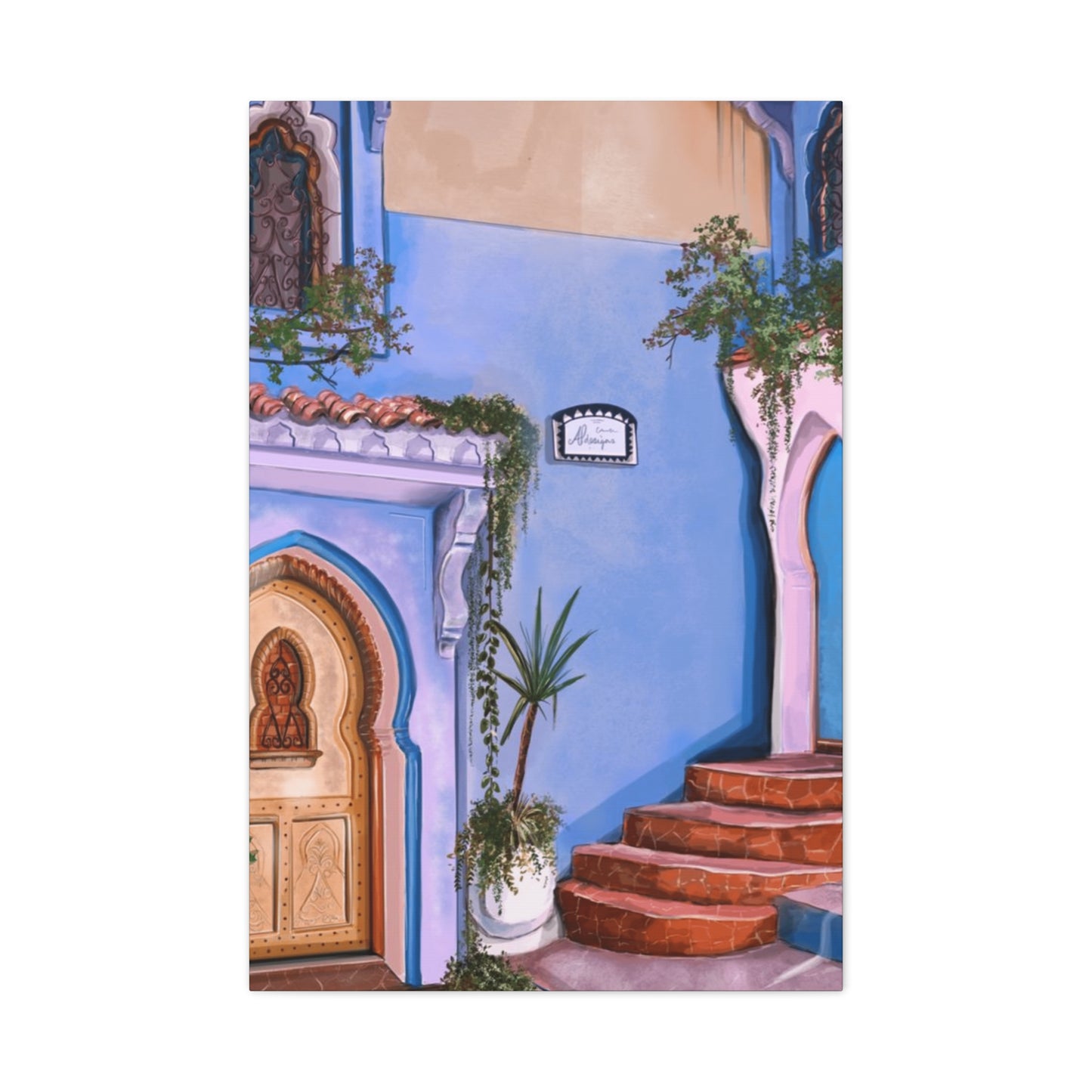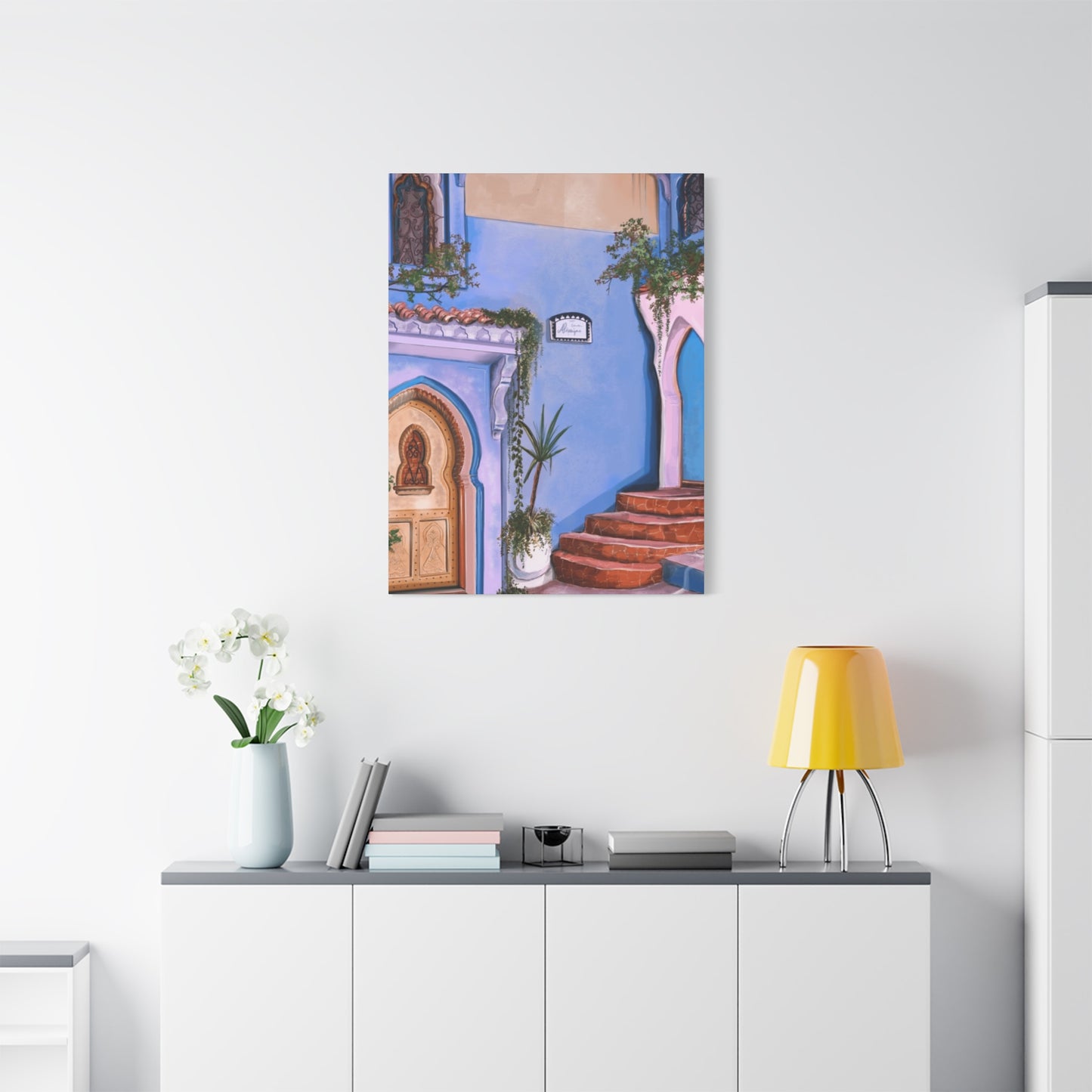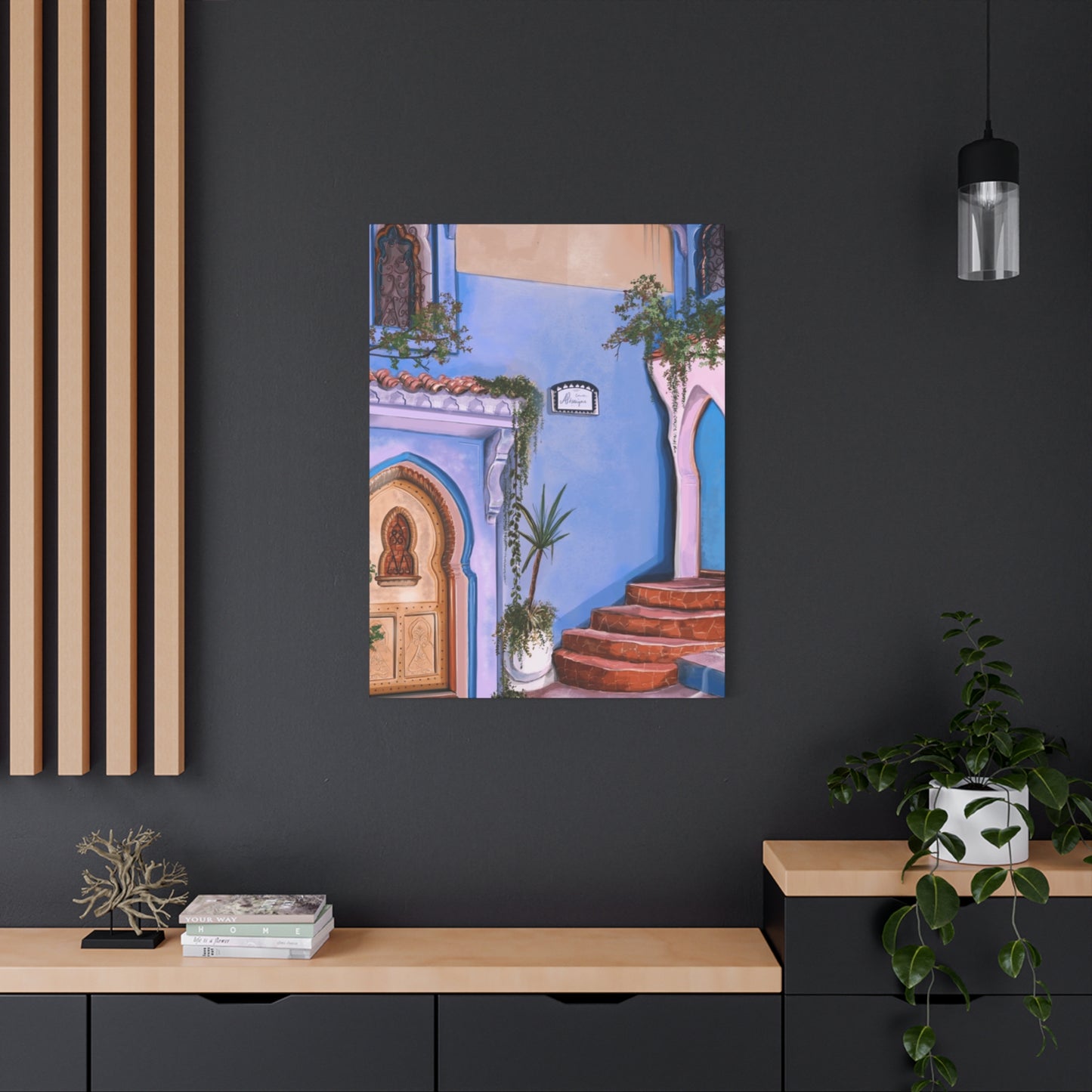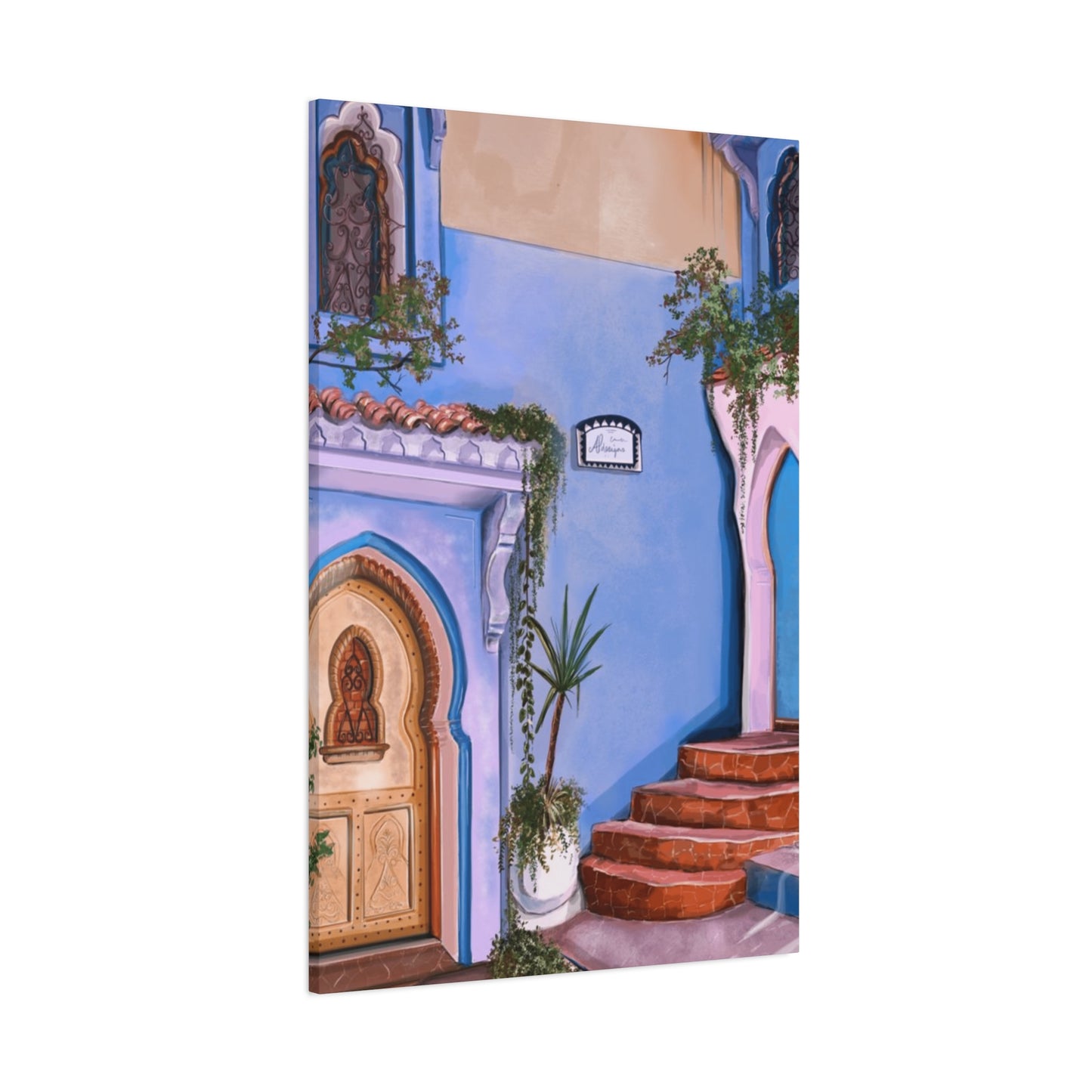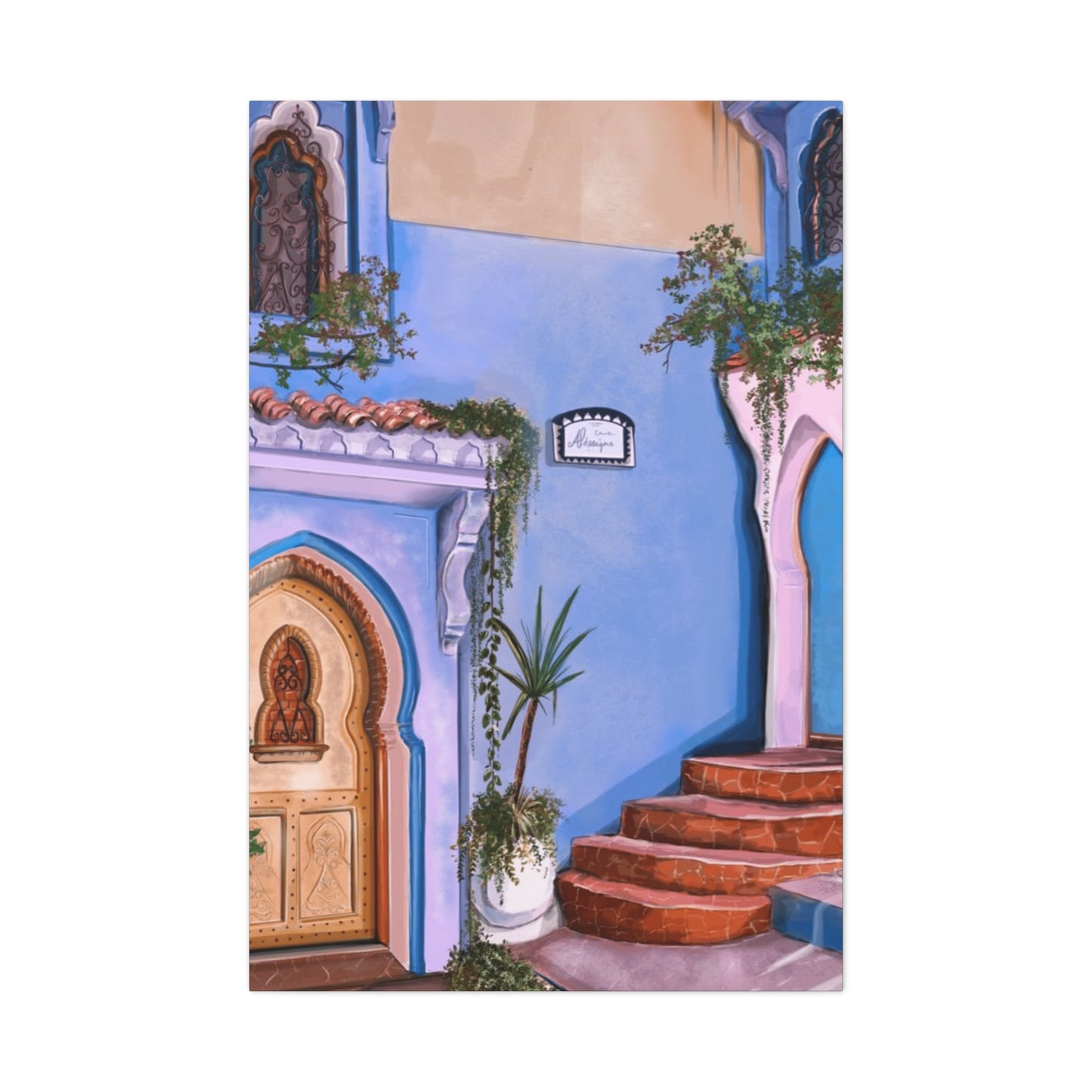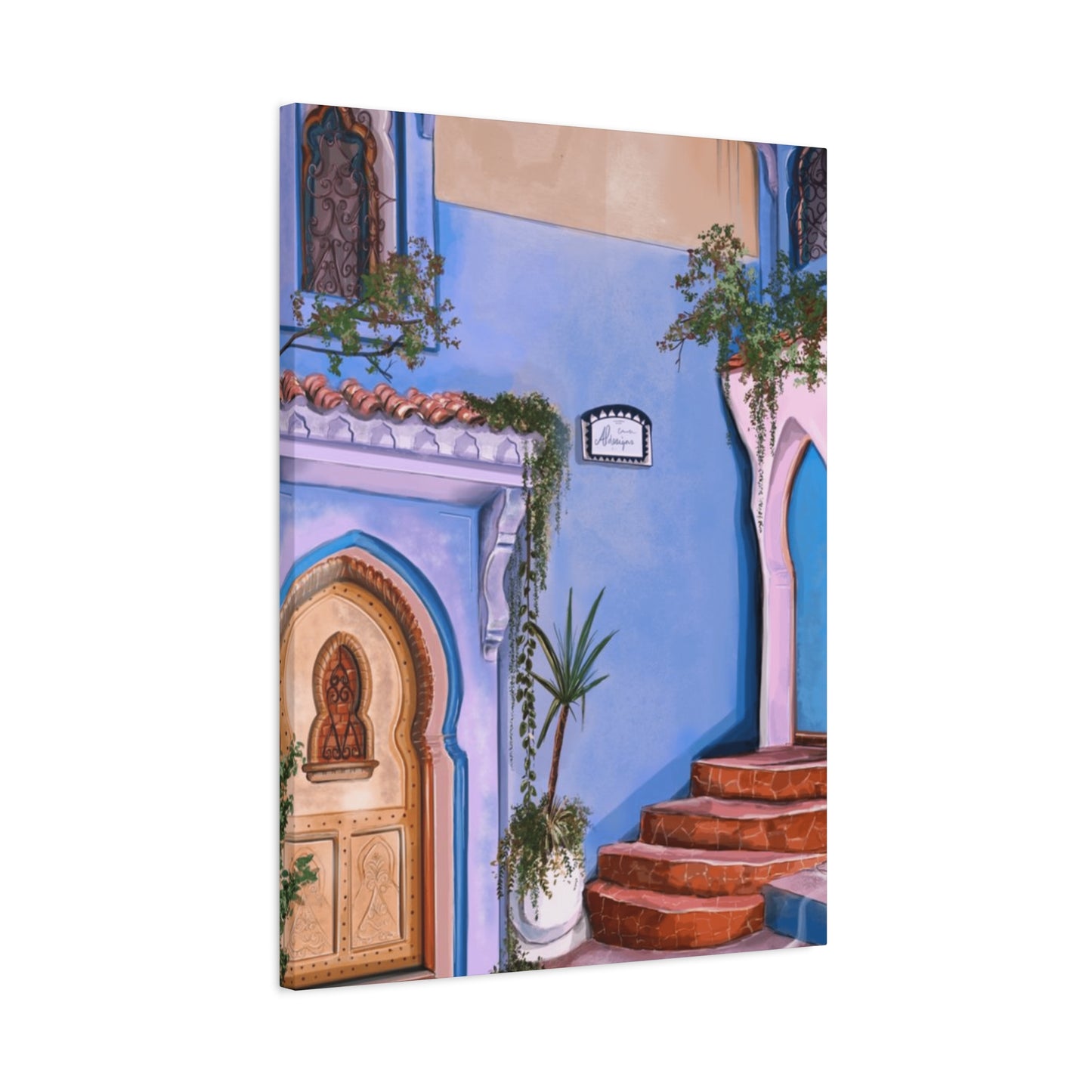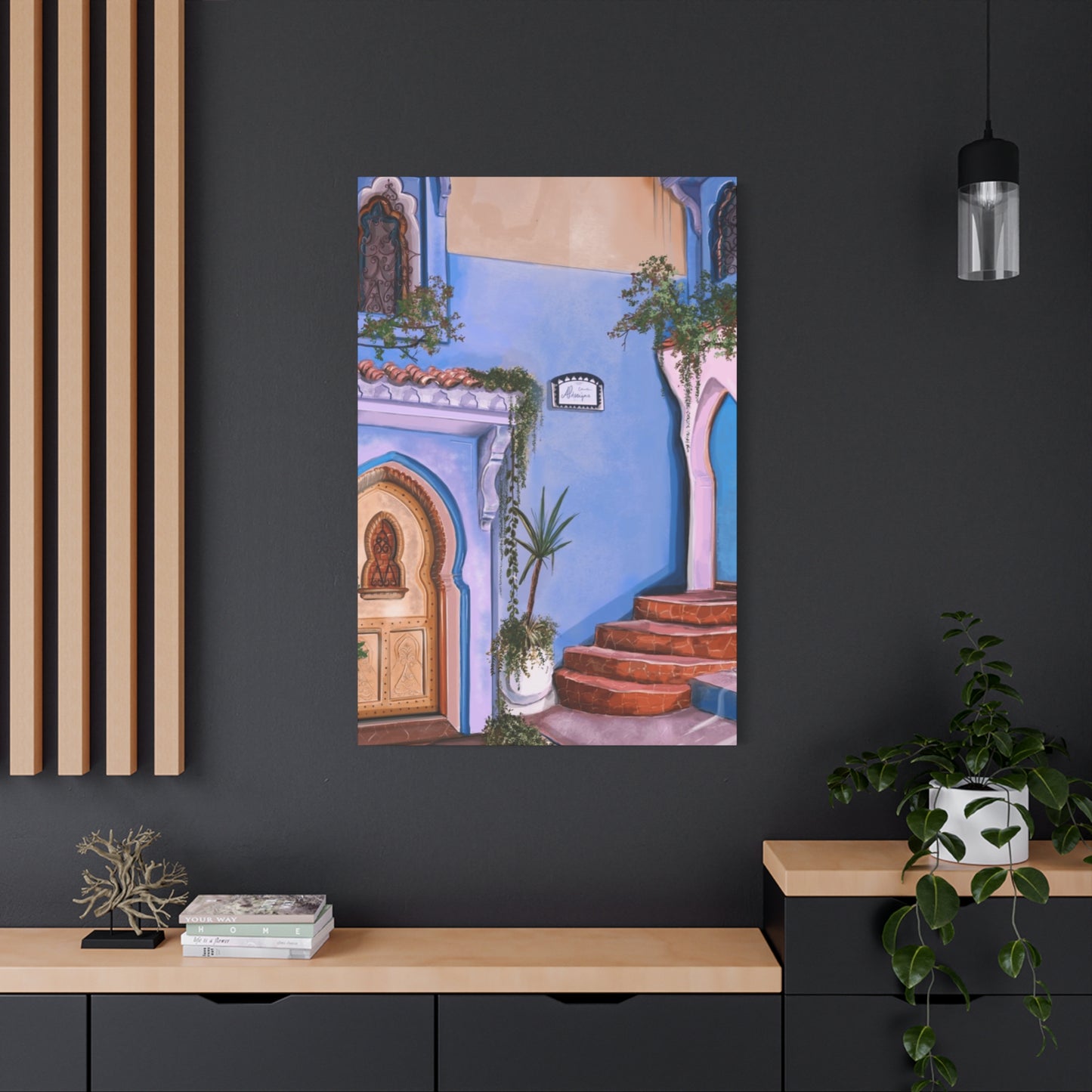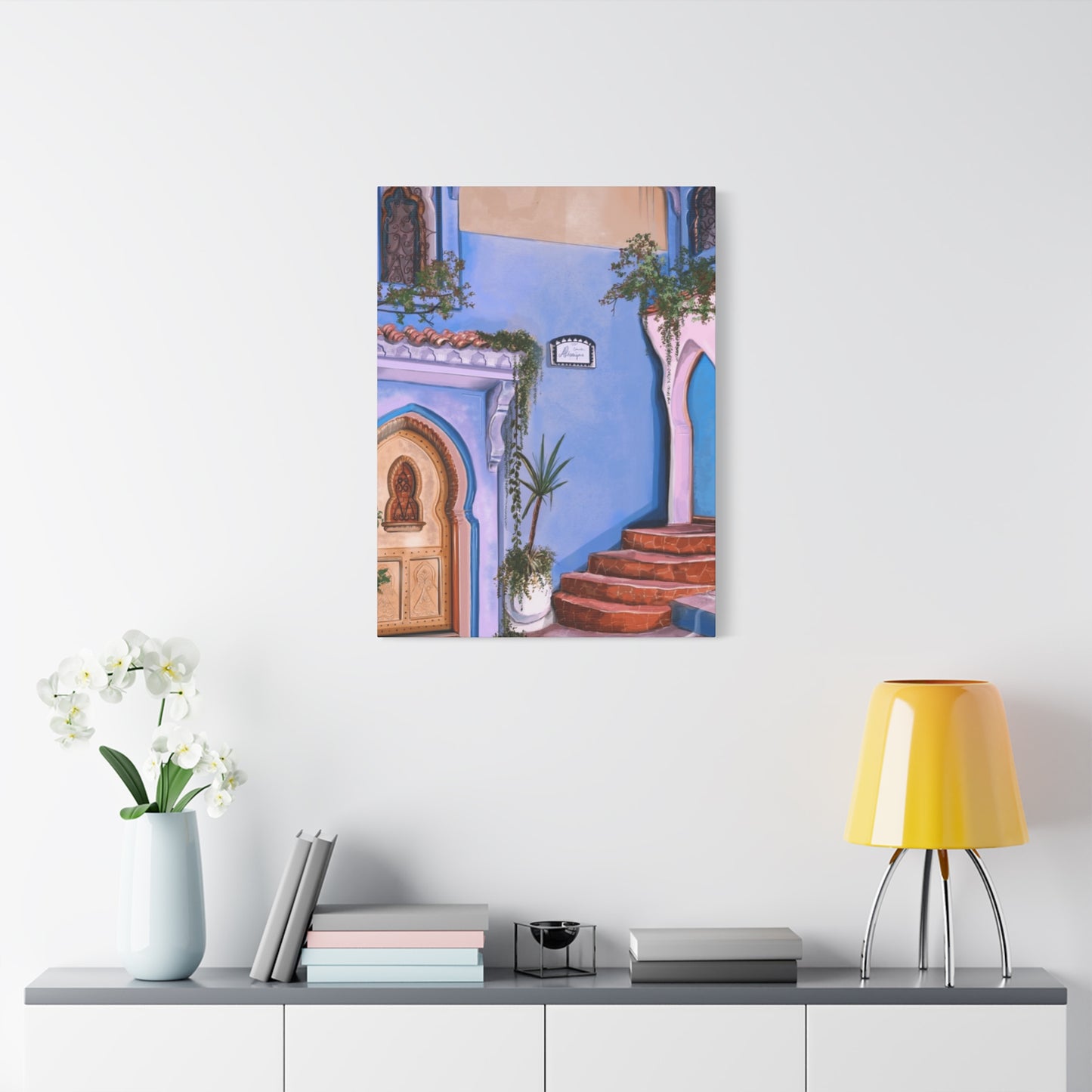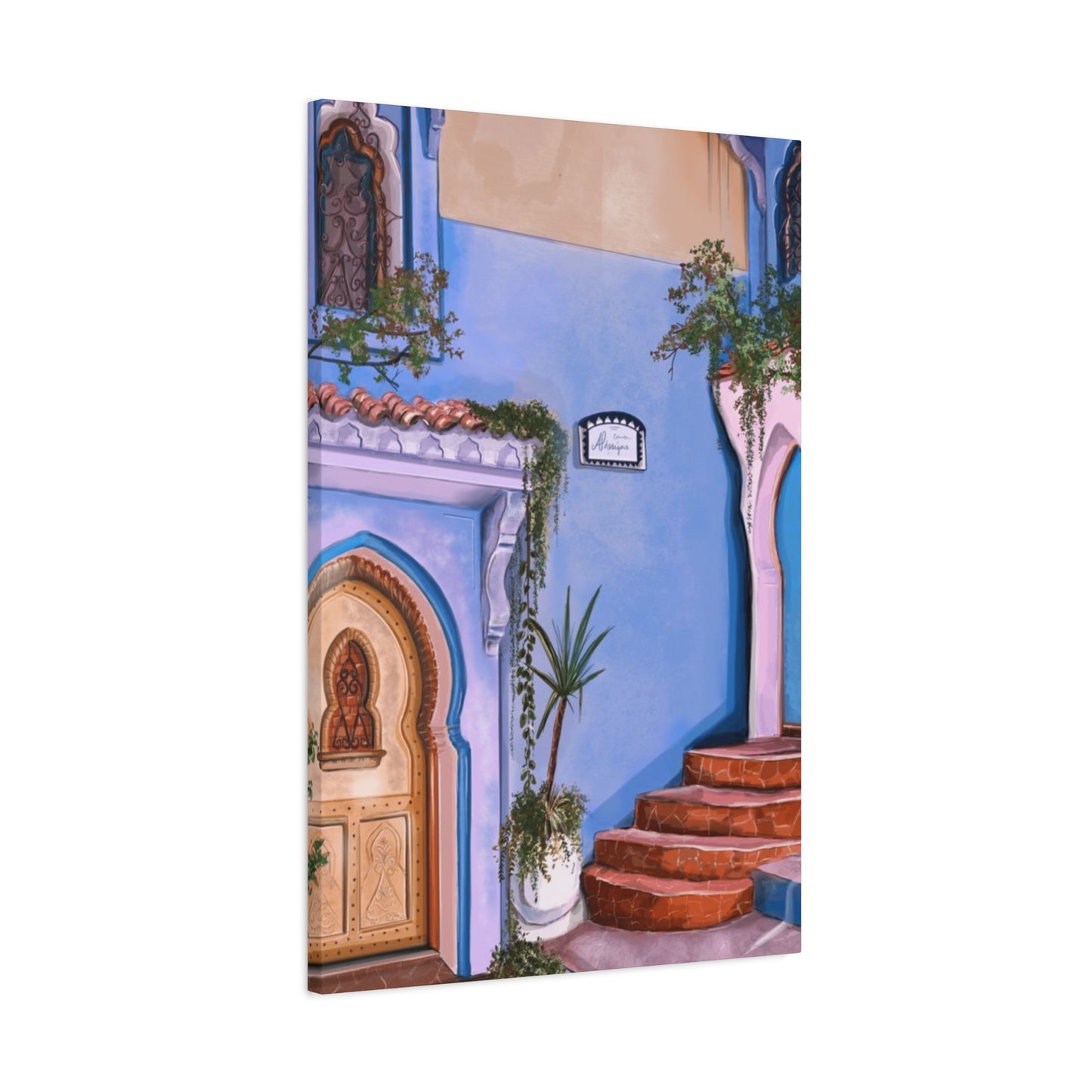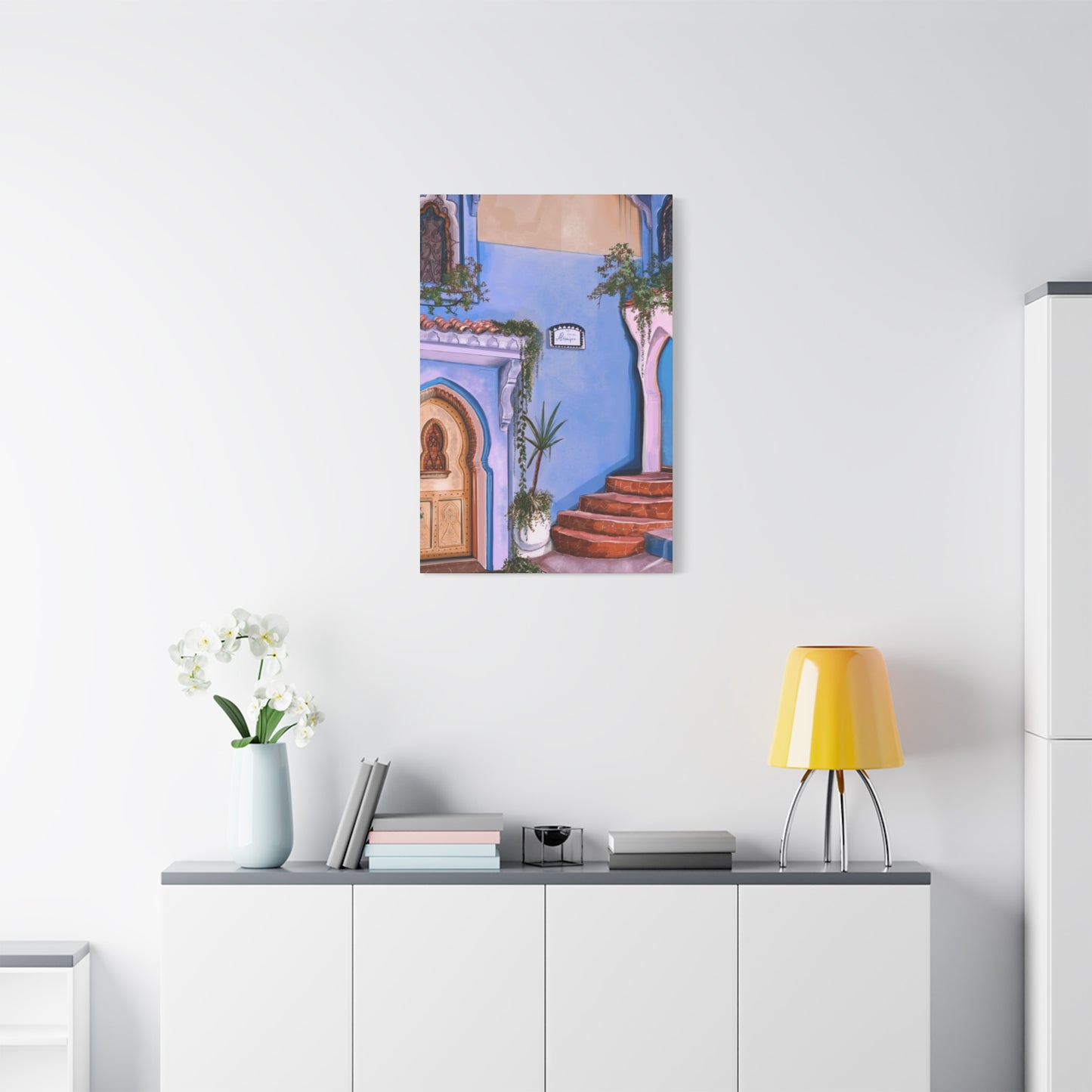Inspirational Moroccan Wall Art for Your Walls: A Journey Through Color, Pattern, and Culture
Moroccan wall art canvas prints have emerged as one of the most captivating design trends in contemporary interior decoration, offering homeowners and designers an exceptional opportunity to infuse spaces with exotic charm, cultural richness, and timeless elegance. These remarkable pieces of decorative art bring the enchanting essence of North African aesthetics directly into modern living environments, creating focal points that captivate attention while harmonizing with various design schemes. The popularity of Moroccan-inspired artwork continues to grow as more people discover the transformative power of these distinctive visual elements in their homes, offices, and commercial spaces.
The allure of Moroccan canvas prints lies in their ability to transport viewers to faraway destinations while maintaining practicality and versatility in application. Unlike traditional artwork that may require specialized framing or mounting, canvas prints offer immediate visual impact with simplified installation processes. The textured surface of canvas material enhances the depth and dimension of Moroccan patterns, creating an authentic appearance that mirrors traditional artwork found throughout the historic cities of Marrakech, Fez, Casablanca, and beyond.
When exploring the world of Moroccan wall art, one encounters an extraordinary diversity of styles, motifs, and color palettes that reflect centuries of cultural evolution and artistic innovation. From intricate geometric patterns inspired by Islamic architectural traditions to vibrant marketplace scenes bursting with life and color, these canvas prints capture the multifaceted nature of Moroccan visual culture. The artistic heritage of Morocco draws from Berber, Arab, Andalusian, and Mediterranean influences, creating a unique aesthetic language that resonates with contemporary sensibilities while honoring historical traditions.
Understanding the Rich Heritage Behind Moroccan Canvas Art
The artistic traditions depicted in Moroccan wall art canvas prints stem from a complex historical tapestry woven through centuries of cultural exchange, religious influence, and indigenous creativity. Morocco's strategic position at the crossroads of Africa, Europe, and the Middle East has resulted in a distinctive artistic vocabulary that synthesizes multiple cultural streams into cohesive visual expressions. This rich heritage provides endless inspiration for contemporary canvas prints that capture the essence of Moroccan aesthetic principles.
Islamic artistic traditions play a fundamental role in shaping Moroccan visual culture, particularly through the emphasis on geometric patterns and arabesques that avoid representational imagery in religious contexts. These mathematical precision patterns, known as zellige in tile work and zouak in painted wood, translate beautifully to canvas prints, offering viewers intricate designs that invite contemplation and meditation. The repetitive nature of geometric motifs creates visual harmony while suggesting infinite continuity, reflecting spiritual concepts central to Islamic philosophy.
Berber influences contribute another essential dimension to Moroccan artistic expression, introducing organic symbols, tribal motifs, and natural imagery that predate Islamic traditions in the region. Indigenous Berber communities developed distinctive artistic vocabularies expressed through textiles, pottery, jewelry, and architectural decoration. These ancient design elements appear in contemporary canvas prints, often featuring diamond patterns, zigzag lines, and symbolic representations of natural phenomena like water, mountains, and celestial bodies. The combination of geometric precision and organic symbolism creates dynamic tension that makes Moroccan art visually compelling.
Andalusian aesthetic refinement entered Moroccan culture through waves of migration from Islamic Spain, bringing sophisticated color theories, architectural innovations, and decorative techniques that elevated artistic production. The gardens, fountains, and palatial interiors of Andalusian design philosophy emphasize harmony between built environments and natural elements, a balance reflected in many canvas prints depicting Moroccan courtyards, riads, and landscape scenes. The famous blue and white color combinations associated with Moroccan coastal towns like Chefchaouen trace their origins to Andalusian refugees who brought these aesthetic preferences to North Africa.
French colonial influence during the twentieth century introduced European artistic movements and modernist sensibilities that merged with traditional Moroccan forms, creating hybrid styles that continue to evolve today. Contemporary Moroccan artists often blend traditional motifs with abstract expressionism, surrealism, or minimalist approaches, resulting in canvas prints that appeal to diverse aesthetic preferences. This ongoing dialogue between tradition and innovation ensures that Moroccan wall art remains relevant and engaging for contemporary audiences.
Exploring Geometric Pattern Canvas Prints in Moroccan Style
Geometric patterns represent perhaps the most recognizable element of Moroccan visual culture, offering endless variations on mathematical themes that create mesmerizing visual experiences. Canvas prints featuring these intricate designs bring architectural grandeur into residential spaces, transforming blank walls into captivating focal points that command attention without overwhelming surrounding decor. The precision and complexity of geometric Moroccan patterns demonstrate the advanced mathematical understanding possessed by traditional artisans who created these designs centuries ago.
The foundation of Moroccan geometric art rests on several basic shapes including squares, triangles, circles, and stars that combine and multiply to generate increasingly complex compositions. The eight-pointed star emerges as a particularly significant motif, representing the union of earthly and celestial realms in Islamic cosmology. Canvas prints featuring this starred geometry often incorporate multiple layers of overlapping patterns, creating depth and movement that engages viewers on multiple levels. The mathematical precision required to execute these designs properly ensures visual harmony even in the most elaborate compositions.
Color application in geometric Moroccan canvas prints follows principles developed through centuries of decorative arts practice. Traditional color palettes often feature combinations of deep blues, emerald greens, ruby reds, golden yellows, and ivory whites arranged in sequences that enhance pattern visibility while maintaining overall balance. Contemporary interpretations may introduce unexpected color combinations or employ monochromatic schemes that emphasize pattern structure over chromatic variety. The interaction between pattern and color creates distinctive moods ranging from vibrant energy to serene contemplation.
Tile work traditions known as zellige provide rich inspiration for geometric canvas prints, translating the mosaic techniques of Moroccan artisans into continuous printed designs. Authentic zellige involves hand-cutting glazed ceramic tiles into precise shapes before assembling them into intricate patterns without predetermined templates, requiring extraordinary skill and spatial visualization. Canvas prints inspired by this tradition capture the irregular charm of handcrafted tiles while offering the consistency and durability of modern printing technology. The result bridges traditional craftsmanship and contemporary convenience.
Scale considerations play an important role in selecting geometric pattern canvas prints for specific spaces. Large-scale patterns with bold contrasts create dramatic statements suitable for spacious rooms with high ceilings and minimal furnishings, while smaller, more intricate patterns work effectively in intimate spaces or as components of gallery wall arrangements. The repeating nature of geometric designs allows for flexible sizing, as patterns can extend or contract without losing visual coherence. Understanding how pattern scale interacts with room dimensions ensures optimal visual impact.
Vibrant Marketplace and Street Scene Canvas Prints
Moroccan marketplaces known as souks provide endless visual stimulation through their colorful displays of merchandise, architectural details, and human activity, making them popular subjects for canvas prints that capture the energetic spirit of North African urban life. These bustling commercial spaces overflow with textiles, spices, metalwork, ceramics, and countless other goods arranged in visually stunning displays that reflect both commercial pragmatism and aesthetic sensibility. Canvas prints depicting marketplace scenes bring this dynamic energy into interior spaces, creating conversation pieces that invite viewers to imagine themselves wandering through exotic locations.
The sensory overload characteristic of Moroccan markets translates effectively to canvas prints through carefully composed photographs or illustrations that balance complexity with legibility. Successful marketplace prints typically feature strong compositional structures that guide viewer attention through the visual chaos, perhaps following a narrow alley perspective that draws the eye deeper into the scene or highlighting a particularly colorful merchandise display that serves as a focal point. The challenge lies in capturing the authentic atmosphere of these spaces while maintaining aesthetic appeal suitable for residential or commercial interiors.
Color intensity distinguishes marketplace canvas prints from more subdued Moroccan art styles, as these scenes often showcase the full spectrum of brilliant hues found in traditional textiles, spices, ceramics, and decorative objects. Rich burgundies, bright oranges, vivid turquoises, and deep purples appear alongside metallic golds and silvers, creating chromatic celebrations that energize spaces and lift spirits. For rooms that feel dull or lifeless, marketplace canvas prints offer instant injections of color and personality that transform entire atmospheres.
Architectural elements provide essential context for marketplace scenes, with canvas prints often featuring the distinctive arched doorways, wooden lattice screens, ornate plasterwork, and weathered stone walls characteristic of Moroccan commercial districts. These architectural details add depth and authenticity to prints while offering textural variety that prevents compositions from becoming visually monotonous. The interplay between architectural permanence and commercial transience creates interesting tensions that give marketplace prints their characteristic vitality.
Human presence enhances the narrative quality of marketplace canvas prints, though the degree of human representation varies based on artistic approach and intended aesthetic. Some prints feature clearly defined figures engaged in commercial transactions or social interactions, while others suggest human activity through more abstract or impressionistic means. The inclusion of people adds scale reference and emotional content that helps viewers connect with scenes on personal levels, imagining themselves as participants rather than mere observers.
Traditional Moroccan Door and Architecture Canvas Prints
The magnificent doors of Morocco represent some of the most photographed and artistically significant architectural elements in North African design, offering canvas print subjects that combine historical gravitas with contemporary aesthetic appeal. These massive wooden portals, often adorned with intricate metalwork, carved details, and weathered patinas, serve as thresholds between public and private realms while displaying remarkable craftsmanship and artistic vision. Canvas prints featuring Moroccan doors bring symbolic richness and architectural beauty into modern interiors, creating focal points that suggest mystery, protection, and cultural heritage.
The diversity of Moroccan door designs reflects regional variations, historical periods, and functional purposes, providing abundant options for canvas print selections. Doors in imperial cities like Fez and Meknes often display elaborate carved panels, brass studs arranged in geometric patterns, and massive iron knockers shaped like hands, each element carrying symbolic significance within Islamic decorative traditions. Coastal town doors may feature blue or white painted surfaces that protect against intense sunlight while creating the characteristic color schemes associated with Mediterranean architecture. Desert region doors tend toward simpler designs adapted to harsh environmental conditions and available materials.
Metalwork details constitute essential components of traditional Moroccan doors, with canvas prints often highlighting the intricate ironwork, brass embellishments, and decorative hardware that enhance these architectural elements. The contrast between weathered wood surfaces and polished metal accents creates visual interest that translates effectively to canvas prints, offering textural variety that engages viewers. Geometric patterns formed by metal studs demonstrate the same mathematical precision found in other Moroccan decorative arts, connecting door designs to broader cultural aesthetic principles.
Color and patina add character to Moroccan door canvas prints, with many sought-after images featuring the aged surfaces that result from decades or centuries of exposure to elements and human touch. Faded paint, cracked wood, rusted metal, and accumulated grime tell stories of time passage and continued use, adding authenticity and emotional resonance that pristine reproductions cannot match. These imperfections become aesthetic virtues in canvas prints, celebrating the beauty of age and impermanence while honoring the enduring presence of architectural monuments.
Compositional approaches to door canvas prints vary from straightforward documentary photography to more artistic interpretations that emphasize abstract qualities or emotional atmospheres. Some prints present doors in full frontal views that showcase symmetry and architectural details, while others employ angled perspectives that add dynamism and spatial depth. Close-up compositions focus on specific details like door knockers, carved panels, or weathered surfaces, transforming functional elements into abstract studies of texture and form. The compositional strategy selected influences how prints integrate into interior design schemes and the emotional responses they generate.
Moroccan Landscape and Desert Scene Canvas Prints
The dramatic landscapes of Morocco offer spectacular subjects for canvas prints that capture the stark beauty of desert environments, the rugged grandeur of mountain ranges, and the serene appeal of coastal regions. These natural vistas provide alternatives to architectural and pattern-focused Moroccan art, introducing organic forms and expansive spatial qualities that create different emotional registers in interior spaces. Desert scene canvas prints particularly resonate with viewers seeking connections to nature, adventure, and the contemplative qualities associated with vast, empty spaces.
The Sahara Desert occupies significant territory in southern Morocco, creating iconic landscapes characterized by massive sand dunes, sparse vegetation, and endless horizons that seem to stretch into infinity. Canvas prints capturing these desert environments often feature the warm color palettes of sand, from pale yellows and soft oranges to deeper amber and terracotta tones that shift throughout the day as sunlight angles change. The simplicity of desert compositions provides visual rest in busy environments while suggesting themes of endurance, minimalism, and essential beauty.
Mountain landscapes offer contrasting aesthetic experiences, with canvas prints featuring the Atlas Mountains showcasing dramatic elevation changes, rocky terrain, and the distinctive Berber villages that cling to mountainsides. These prints introduce cooler color palettes dominated by grays, browns, and blues, with seasonal variations including snow-capped peaks and green valley floors that demonstrate the environmental diversity of Moroccan geography. Mountain scenes work particularly well in spaces where inhabitants seek feelings of stability, permanence, and connection to ancient landscapes shaped by geological time.
Oasis environments provide visually lush subjects that contrast dramatically with surrounding desert landscapes, offering canvas prints that celebrate the life-giving properties of water in arid regions. Palm groves, spring-fed pools, and cultivated gardens appear as verdant islands within harsh environments, their green vegetation creating striking color contrasts against sand and rock. These oasis scenes carry symbolic weight related to refuge, abundance, and the human capacity to create thriving communities in challenging environments.
Coastal landscapes present yet another dimension of Moroccan natural beauty, with canvas prints featuring Atlantic and Mediterranean shorelines offering completely different aesthetic experiences. Rocky cliffs, sandy beaches, fishing villages, and the distinctive blue and white architecture of coastal towns create compositions that feel simultaneously exotic and approachable. The presence of water introduces movement and reflection that adds visual complexity while suggesting themes of trade, exploration, and cultural exchange that have shaped Moroccan history.
Intricate Mandala and Islamic Art Canvas Prints
Mandala designs rooted in Islamic artistic traditions offer some of the most spiritually significant and visually mesmerizing options for Moroccan-inspired canvas prints. These circular compositions based on radiating patterns from central points create focal meditation aids that encourage contemplation while displaying extraordinary artistic skill and mathematical precision. The symmetry and balance inherent in mandala designs make them naturally suited to canvas print format, where viewers can appreciate intricate details and overall harmony simultaneously.
Islamic artistic restrictions against representational imagery in religious contexts directed creative energy toward geometric abstraction and mathematical pattern exploration, resulting in decorative traditions that achieve spiritual expression through pure form. Mandala-style canvas prints carry this legacy forward, offering secular applications of sacred design principles that maintain their contemplative qualities even in non-religious settings. The circular format suggests wholeness, unity, and cosmic order, making these prints particularly appropriate for spaces dedicated to meditation, yoga, or quiet reflection.
Color symbolism plays important roles in Islamic mandala designs, with traditional palettes often emphasizing blues representing divine knowledge and spiritual truth, greens symbolizing paradise and renewal, golds suggesting divine light and earthly wealth, and whites representing purity and transcendence. Contemporary canvas prints may adhere to these traditional color associations or explore alternative chromatic schemes that prioritize aesthetic compatibility with modern interiors. Understanding color symbolism adds interpretive depth to mandala selections while ensuring chosen prints align with intended spatial atmospheres.
The mathematical foundations of Islamic mandala designs demonstrate sophisticated understanding of geometry, proportion, and pattern generation that predates modern mathematical formalization of these concepts. Canvas prints showcasing these designs honor intellectual achievements of Islamic scholars and artisans who developed complex pattern systems centuries ago. The universal language of mathematics transcends cultural boundaries, allowing mandala designs to resonate with diverse audiences regardless of religious or cultural backgrounds.
Layering and complexity distinguish exceptional mandala canvas prints from simpler geometric designs, with the most accomplished examples featuring multiple overlapping pattern systems that create visual depth and reward sustained viewing. Initial impressions of overall symmetry give way to discoveries of subtle variations, secondary patterns, and intricate details that emerge through careful observation. This quality of revealing complexity gradually makes mandala prints engaging long-term additions to spaces, as occupants continue discovering new aspects over time.
Textile and Rug Pattern Inspired Canvas Prints
Moroccan textile traditions provide rich inspiration for canvas prints that capture the beauty of woven designs without the maintenance requirements or cost of authentic carpets and textiles. These prints translate the geometric patterns, tribal motifs, and color combinations characteristic of Berber rugs, embroidered fabrics, and woven goods into wall art that complements or substitutes for actual textiles in interior design schemes. The visual warmth and tactile qualities suggested by textile-inspired prints add comfort and cultural authenticity to spaces while remaining practical and affordable.
Berber rug designs constitute particularly significant sources for textile-inspired canvas prints, as these traditional weavings showcase abstract patterns that combine geometric precision with organic irregularities characteristic of handcrafted goods. Diamond patterns, chevrons, crosses, and abstract symbols appear in compositions that tell stories through visual language developed over generations. Canvas prints capturing these designs honor indigenous artistic traditions while making them accessible to broader audiences who appreciate their aesthetic qualities independent of cultural context.
Color combinations in textile-inspired canvas prints often reflect the natural dyes traditionally used in Moroccan weaving, including rich reds from madder root, warm yellows from saffron, deep blues from indigo, and earthy browns from walnut husks. These organic color palettes create harmonious compositions that feel grounded and authentic, avoiding the artificial brightness of synthetic dyes while maintaining visual impact. Contemporary interpretations may expand beyond traditional palettes while maintaining the balanced color relationships that make Moroccan textiles visually satisfying.
The irregularities and variations present in handwoven textiles add character that distinguishes authentic designs from mass-produced alternatives, and superior canvas prints capture these qualities that suggest human craftsmanship. Slight asymmetries, color variations, and textural inconsistencies become aesthetic virtues rather than flaws, celebrating the maker's hand and rejecting industrial perfection. This embrace of imperfection aligns with broader design movements valuing authenticity, sustainability, and human connection in manufactured goods.
Fringe and border elements typical of Moroccan textiles sometimes appear in canvas prints, extending designs beyond central pattern fields to create complete compositions that reference their woven origins. These peripheral elements add visual interest while grounding prints in specific textile traditions that viewers may recognize. The translation from three-dimensional woven objects to two-dimensional printed images requires artistic decisions about which textile qualities to emphasize and how to suggest depth and texture through graphic means.
Colorful Moroccan Tile Work Canvas Prints
Tile work represents one of Morocco's most distinctive artistic achievements, with ceramic surfaces covering walls, floors, fountains, and architectural details throughout the country's cities and monuments. Canvas prints inspired by these tile traditions bring the vibrant colors and intricate patterns of Moroccan ceramics into spaces where actual tile installation would be impractical or impossible. These prints offer visual richness and cultural authenticity while maintaining the flexibility and affordability advantages of canvas art over permanent architectural treatments.
The zellige technique produces the most celebrated Moroccan tile work, involving hand-cut glazed ceramic pieces assembled into geometric patterns of extraordinary complexity and beauty. Traditional zellige displays limited color palettes focused on blues, greens, whites, and earth tones, with each color requiring separate firing processes and careful quality control. Canvas prints inspired by zellige capture the characteristic irregular edges of hand-cut tiles and the subtle color variations that distinguish authentic work from modern machine-made alternatives.
Larger ceramic tiles painted with decorative motifs offer different aesthetic experiences, with canvas prints featuring these designs showcasing the fluid brushwork and artistic expression possible in painted ceramic decoration. Floral motifs, calligraphic elements, and pictorial scenes appear on these tiles, expanding beyond pure geometric abstraction to incorporate representational imagery. The combination of painted tiles with geometric patterns creates visual variety that prevents compositions from becoming monotonous while maintaining overall coherence through shared color palettes and design principles.
Three-dimensional tile work creates architectural relief that adds shadow patterns and sculptural qualities to flat surfaces, a challenge for canvas prints attempting to capture these dimensional effects through photographic or illustrative means. Successful prints employ lighting, shading, and perspective techniques that suggest depth and texture, helping viewers imagine the tactile experience of actual tile surfaces. The interplay between light and shadow becomes an essential compositional element that adds drama and visual interest.
Contemporary approaches to tile-inspired canvas prints sometimes abstract traditional designs, isolating specific pattern elements or color combinations to create modern interpretations that honor heritage while embracing current aesthetic sensibilities. These hybrid designs appeal to audiences seeking connections to cultural traditions without literal reproductions, offering flexibility in matching diverse interior design schemes. The balance between tradition and innovation remains central to successful contemporary Moroccan design applications.
Moroccan Calligraphy and Typography Canvas Prints
Arabic calligraphy constitutes one of Islam's highest art forms, with centuries of development producing diverse scripts and stylistic approaches that transform written language into visual splendor. Canvas prints featuring Moroccan calligraphy bring this sophisticated artistic tradition into modern spaces, offering pieces that function as both aesthetic objects and carriers of meaning for viewers who read Arabic. The flowing lines, dramatic proportions, and careful composition of calligraphic works create dynamic visual experiences that complement other Moroccan design elements.
The Maghrebi script developed in North Africa displays distinctive characteristics that differentiate it from Middle Eastern calligraphic traditions, with rounder letterforms and unique approaches to diacritical marks and letter connections. Canvas prints featuring authentic Maghrebi calligraphy showcase this regional style's particular elegance and historical significance. The script's flowing nature creates compositions with strong horizontal movement balanced by vertical elements that add stability and rhythm.
Common phrases and quotations appearing in Moroccan calligraphic art often draw from Quranic verses, poetry, or proverbial wisdom that carries cultural resonance for Arabic-speaking audiences. Canvas prints featuring these texts add layers of meaning for knowledgeable viewers while functioning as abstract compositions for those who don't read Arabic. Phrases blessing the home, invoking divine protection, or celebrating beauty and hospitality frequently appear in residential applications, making these prints simultaneously decorative and spiritually meaningful.
Contemporary calligraphic artists often combine traditional scripts with modern design sensibilities, creating works that push boundaries while maintaining connections to historical practices. Canvas prints featuring these contemporary approaches appeal to audiences seeking artwork that honors tradition while embracing current aesthetic values. Experimental compositions might incorporate unexpected color schemes, integrate calligraphy with geometric patterns or representational imagery, or explore three-dimensional effects that add drama and visual interest.
The relationship between figure and ground in calligraphic compositions requires careful consideration, as the interplay between written forms and surrounding space creates much of the visual impact. Some calligraphic canvas prints feature dark text on light backgrounds emphasizing legibility and classical elegance, while others reverse this relationship or explore more complex color interactions. The space around and between letterforms becomes an active compositional element rather than passive emptiness, contributing to overall aesthetic success.
Sunset and Golden Hour Canvas Prints
The quality of light in Morocco creates exceptional opportunities for photography and artistic representation, with sunrise and sunset periods producing golden illumination that transforms landscapes and architectural subjects. Canvas prints capturing these magical lighting conditions offer warmth and atmospheric depth that enhance interior environments. The emotional resonance of golden hour imagery connects to universal human responses to natural beauty while showcasing specifically Moroccan settings.
Desert landscapes become particularly dramatic during golden hour periods when low-angle sunlight emphasizes the texture and form of sand dunes through extended shadows and warm color temperatures. Canvas prints featuring these illuminated desert scenes create contemplative focal points that suggest vastness, serenity, and natural beauty. The simplified compositions typical of desert photography achieve maximum impact when enhanced by exceptional lighting conditions.
Urban scenes photographed during sunset or sunrise reveal architectural details and street life bathed in flattering warm light that softens harsh contrasts and creates nostalgic, romantic atmospheres. Canvas prints featuring medina streets, market scenes, or architectural landmarks photographed during these optimal conditions showcase Moroccan environments at their most beautiful. The emotional qualities of golden hour light add sentimentality and poetic feeling that enhance decorative appeal.
Coastal sunset scenes combine the Mediterranean color palette of blues and whites with warm golden light, creating harmonious compositions that balance cool and warm tones. Canvas prints featuring these coastal golden hour scenes work particularly well in spaces seeking both energy and tranquility, as the active sunset drama balances with the calming presence of water. These versatile images complement diverse interior design approaches.
Silhouette compositions utilizing dramatic sunset skies reduce architectural or landscape elements to dark shapes against brilliant backgrounds, emphasizing form and profile over detail and texture. Canvas prints featuring these high-contrast silhouettes create bold graphic statements that command attention while maintaining simplicity and elegance. The universal recognition of sunset imagery makes these prints accessible to broad audiences regardless of cultural familiarity with Moroccan subjects.
Spice Market and Food Canvas Prints
The sensory abundance of Moroccan spice markets provides visually stunning subjects for canvas prints that celebrate color, texture, and the cultural importance of culinary traditions. Mounded spices in vibrant yellows, oranges, reds, and browns create natural compositions that require little artistic intervention beyond thoughtful framing and lighting. These prints bring the energy and aromatic suggestions of spice souks into homes, creating focal points that stimulate conversation and appetite.
Traditional spice presentations in conical piles arranged in rows create geometric patterns and color gradations that possess inherent aesthetic appeal. Canvas prints capturing these arrangements celebrate both the natural beauty of ingredients and the artistic sensibility of merchants who display goods for maximum visual impact. The combination of organic materials and geometric organization reflects broader themes in Moroccan design culture.
Wider marketplace views including vendors, customers, and surrounding architectural contexts add narrative depth to food and spice themed canvas prints, suggesting stories about cultural practices, economic exchange, and daily life. These more complex compositions appeal to viewers interested in documentary or anthropological dimensions of photography while maintaining strong aesthetic qualities. The human elements add scale and emotional connection that pure product photography may lack.
Close-up studies of individual spices, dried fruits, nuts, or other market goods create abstract compositions emphasizing color, texture, and material qualities. Canvas prints featuring these intimate views transform mundane ingredients into artistic subjects worthy of sustained attention. The macro perspective reveals details invisible to casual observation, encouraging viewers to see familiar objects with fresh appreciation.
Traditional Moroccan dishes presented in decorative tagines or serving vessels offer alternative food-focused canvas print subjects that emphasize prepared cuisine rather than raw ingredients. These styled photographs showcase the visual appeal of Moroccan culinary traditions while suggesting hospitality, celebration, and domestic life. Such prints work particularly well in dining rooms and kitchens where food themes feel naturally appropriate.
Moroccan Lantern and Lighting Feature Canvas Prints
Traditional Moroccan lanterns with their intricate metalwork and colored glass create magical lighting effects and serve as iconic design elements recognized globally. Canvas prints featuring these distinctive lighting fixtures bring suggestions of ambient illumination and exotic evening atmospheres into spaces, creating focal points that evoke mystery and romance. The interplay between solid metal patterns and glowing light produces dramatic contrasts that translate effectively to photographic and illustrative media.
Hanging lanterns photographed in groups create compositions with strong vertical elements and repeated forms that add rhythm and visual interest. Canvas prints featuring multiple lanterns showcase the cumulative effect of these lighting fixtures in traditional settings while demonstrating how repetition strengthens design impact. The various shapes, sizes, and decorative patterns of different lanterns introduce variety within unified themes.
Close-up perspectives emphasizing metalwork patterns transform lanterns into studies of Islamic geometric design and traditional metalworking techniques. Canvas prints focusing on these decorative details allow viewers to appreciate craftsmanship and pattern complexity independent of functional lighting contexts. The shadows cast by perforated metal create secondary patterns that add depth and visual intrigue.
Illuminated lanterns photographed in low light conditions capture the warm glow and atmospheric effects these fixtures produce, showcasing their functional beauty and ambient qualities. Canvas prints featuring lit lanterns suggest evening scenes, intimate gatherings, and the transformative power of lighting in creating mood. The contrast between dark surroundings and illuminated lantern interiors creates dramatic focal points that draw and hold viewer attention.
Contemporary artistic interpretations of lantern imagery might abstract forms, multiply elements through digital manipulation, or combine lantern motifs with other Moroccan design elements to create hybrid compositions. Canvas prints featuring these creative approaches appeal to audiences seeking modern interpretations of traditional subjects, offering flexibility in matching diverse interior aesthetics while maintaining cultural references.
Botanical and Garden Canvas Prints
Gardens hold special significance in Moroccan culture, representing paradise imagery from Islamic tradition while providing practical respite from harsh climates. Canvas prints featuring botanical subjects and garden scenes bring natural beauty and symbolic richness into interior spaces, offering alternatives to architectural and pattern-focused Moroccan art. The lush vegetation typical of Moroccan gardens creates welcome visual relief and suggests themes of growth, renewal, and careful cultivation.
Palm trees constitute signature elements of Moroccan landscapes, appearing in desert oases, urban gardens, and coastal settings throughout the country. Canvas prints featuring palms as central subjects or compositional elements immediately establish geographic and cultural context while introducing organic forms that contrast with geometric architectural elements. The distinctive silhouettes and linear frond patterns of palms create recognizable visual motifs that work effectively in varied artistic treatments.
Flowering plants including bougainvillea, jasmine, roses, and oleander add vibrant color and delicate forms to Moroccan gardens, providing canvas print subjects that celebrate natural beauty and horticultural achievements. These botanical portraits work particularly well in spaces seeking feminine energy, romantic atmospheres, or connections to natural cycles. The transient nature of flowers adds poignancy that permanent architectural subjects lack.
Formal garden designs with geometric plant beds, gravel paths, and central fountains demonstrate how Islamic design principles extend from architecture to landscape organization. Canvas prints depicting these planned spaces showcase human efforts to impose order on nature while creating beautiful, functional environments. The tension between natural growth and geometric constraint creates visual interest and philosophical resonance.
Citrus trees laden with fruit represent abundance and hospitality in Moroccan culture, making them meaningful subjects for canvas prints intended for dining areas or spaces associated with gathering and nourishment. The combination of green foliage, bright fruit, and often decorative containers creates naturally balanced compositions that require minimal artistic intervention. These prints suggest themes of generosity, fertility, and domestic comfort.
Color Coordination and Palette Selection
Integrating Moroccan canvas prints successfully within existing interior design schemes requires thoughtful consideration of color relationships between artwork and surrounding elements including wall colors, furnishings, textiles, and accessories. Harmonious color coordination creates visual flow and unified atmospheres while strategic contrast generates energy and focal emphasis. Understanding color theory principles and Moroccan palette characteristics enables informed selection that enhances rather than disrupts established design schemes.
Monochromatic approaches selecting Moroccan prints featuring colors already present in room palettes create cohesive environments where artwork reinforces rather than challenges existing chromatic decisions. This conservative strategy suits spaces with strong established color identities where introducing additional hues might create visual chaos. The challenge lies in achieving sufficient contrast between print and surroundings to maintain visual interest while staying within narrow color ranges.
Complementary color strategies intentionally introducing hues opposite to dominant room colors on the color wheel create vibrant energy through chromatic tension. Moroccan prints featuring warm oranges and reds in predominantly blue or green spaces, or cool blues in warm-toned environments generate visual excitement that enlivens otherwise subdued atmospheres. This bold approach requires confidence and careful balance to avoid jarring effects that tire eyes and overwhelm spaces.
Analogous color schemes selecting prints featuring hues adjacent to room colors on the color wheel create harmonious gradual transitions that feel natural and restful. Moroccan artwork incorporating multiple warm tones in warm-colored rooms or various cool hues in cool environments achieves variety within unified families. This sophisticated approach demonstrates color sensitivity while maintaining visual interest through tonal variations and saturation differences.
Neutral base strategies surrounding colorful Moroccan prints with neutral walls, furnishings, and accessories allow artwork to function as primary color sources in otherwise understated environments. This approach gives canvas prints maximum visual impact while maintaining flexibility to change artwork without necessitating comprehensive room redecoration. The neutral surroundings frame and highlight artwork much as museum white walls showcase collections.
Accent color coordination selecting single colors from complex Moroccan prints to echo in surrounding accessories creates visual connections that integrate artwork naturally within rooms. Pulling specific hues from canvas prints to repeat in throw pillows, vases, or small furniture pieces establishes intentional relationships that demonstrate design awareness and compositional skill. This technique works particularly well with prints featuring multiple colors where strategic emphasis clarifies intended palette hierarchy.
Placement and Positioning Strategies
Strategic placement of Moroccan canvas prints significantly influences their visual impact and functional success within interior spaces. Thoughtful positioning considers viewing angles, lighting conditions, furniture relationships, and circulation patterns to ensure artwork achieves maximum aesthetic effect while respecting spatial constraints and human usage patterns. Professional designers employ time-tested placement principles that enhance artwork presence while maintaining practical room functionality.
The traditional guideline suggesting artwork hanging with centers at average eye level, approximately sixty inches from floor to center point, creates comfortable viewing relationships that don't require excessive neck bending or crouching. This standard height works effectively in most contexts while allowing adjustment for specific circumstances including viewer height variations, furniture relationships, and architectural features. In homes with children or seated viewing situations, lower positioning may prove more appropriate than strict adherence to standard measurements.
Above-furniture placement represents the most common canvas print positioning strategy, with artwork hung centered above sofas, beds, dining tables, or console tables to create unified furniture-artwork groupings. Successful implementation requires maintaining appropriate scale relationships where artwork width measures roughly two-thirds to three-quarters of furniture width below. Vertical distance between furniture tops and artwork bottoms typically ranges from six to twelve inches, balancing visual connection and breathing space.
Focal wall strategies concentrating attention on single walls through large-scale artwork or gallery arrangements create architectural emphasis in open floor plans or featureless rooms lacking natural focal points. Moroccan canvas prints serving focal roles should command attention through size, color vibrancy, or compositional drama while complementing rather than competing with other room elements. This approach works particularly well in modern spaces where architectural ornament and molding details that traditionally created visual interest remain absent.
Hallway and corridor placements transform transitional spaces into gallery-like experiences through sequential canvas print installations that create rhythmic visual progressions. Moroccan artwork in these contexts should maintain appropriate scale for intimate viewing distances while resisting visual clutter that narrows already confined spaces. Consistent heights and spacing between multiple prints create orderly progressions while varied sizes and subjects maintain interest along extended walls.
Unexpected locations including bathroom walls, closet interiors, stairway walls, and utility spaces represent opportunities to extend design consideration throughout entire homes rather than limiting decoration to primary living areas. Moroccan canvas prints in these overlooked spaces demonstrate design thoroughness and create pleasant surprises for residents and visitors. Scale and subject matter should suit specific contexts, with smaller, more intimate prints appropriate for confined spaces.
Lighting Considerations for Maximum Impact
Proper lighting dramatically influences how viewers perceive and respond to Moroccan canvas prints, affecting color accuracy, detail visibility, and overall aesthetic impact. Both natural and artificial illumination require consideration during placement planning to ensure artwork receives sufficient light without suffering damage from excessive exposure or glare problems that prevent comfortable viewing. Understanding lighting principles enables optimization of existing conditions or strategic enhancement through supplementary fixtures.
Natural daylight provides ideal illumination for color accuracy and detail visibility but varies dramatically based on window orientation, time of day, seasonal changes, and weather conditions. Canvas prints positioned to receive indirect natural light benefit from excellent viewing conditions during daylight hours without the fading risks associated with direct sun exposure. East-facing walls receive gentle morning light while west-facing positions catch afternoon sun, considerations influencing artwork longevity and appearance at different times.
Direct sunlight accelerates canvas print fading through ultraviolet radiation that breaks down inks and canvas materials over extended exposure periods. Valuable or frequently viewed prints warrant protection from direct sun through strategic positioning away from windows or installation of UV-filtering window treatments that preserve illumination while blocking harmful wavelengths. Less critical prints in sun-exposed positions accept gradual fading as acceptable trade-off for optimal placement meeting other design criteria.
Ambient artificial lighting from ceiling fixtures, chandeliers, or recessed cans provides general illumination that allows comfortable viewing without highlighting specific artworks. Canvas prints relying solely on ambient light should position within well-lit areas rather than shadowy corners or dimly illuminated walls where details disappear and colors appear muddy. Room lighting design should consider artwork locations to ensure adequate illumination reaches all decorated walls.
Accent lighting through dedicated picture lights, track lighting, or directional spots dramatically enhances canvas print visibility while creating focal emphasis that draws attention to specific artworks. These supplementary light sources allow precise control of illumination angles, intensity, and color temperature to optimize viewing conditions regardless of ambient lighting situations. Professional-quality LED picture lights providing focused illumination without heat generation represent ideal solutions for valuable prints warranting investment in dedicated lighting.
Lighting color temperature significantly affects how viewers perceive canvas print colors, with warm yellowish light from traditional incandescent bulbs creating cozy atmospheres while potentially distorting color accuracy. Cool white LEDs approximate daylight color temperatures that render colors accurately but may feel harsh or clinical in residential settings. Neutral white light sources around 3000-3500 Kelvin balance warmth and accuracy, creating comfortable viewing environments while maintaining reasonable color fidelity.
Framing and Finishing Options for Canvas Prints
Canvas prints offer various presentation formats influencing their appearance, durability, and installation requirements. Understanding available framing and finishing options enables informed selection matching aesthetic preferences, practical considerations, and budget constraints. The choice between different formats significantly impacts final artwork appearance and integration within interior design schemes.
Gallery-wrapped canvas represents the most popular presentation format, with printed canvas extending around stretcher bar sides to create finished edges requiring no additional framing. This contemporary presentation style emphasizes the artwork itself without decorative surrounds, creating clean modern appearances that integrate seamlessly with minimalist and contemporary interiors. Side edge treatments vary from mirrored image extensions to solid colors or continued patterns that transform depth edges into design elements rather than afterthoughts.
Floater frames surround gallery-wrapped canvases with shallow frames that create visual gaps between canvas edges and frame interiors, producing floating appearances where artwork seems suspended within frames. This sophisticated presentation format combines frameless canvas aesthetic with the finished formality of traditional framing. Floater frames provide protection while adding visual weight that helps larger canvases feel appropriately substantial within spacious rooms.
Traditional framing with glazing places canvas prints behind glass or acrylic within conventional picture frames, providing maximum protection against dust, humidity, and physical contact. This formal presentation suits traditional interior design schemes where framed artwork represents expected decoration. The protective glazing adds expense and weight while potentially creating reflection issues that interfere with viewing, considerations that make this option less popular than frameless or floater-framed alternatives.
Metal and wood frame selections offer dramatically different aesthetic effects influencing how canvas prints integrate within design schemes. Sleek metal frames in black, silver, or gold finishes create contemporary appearances that complement modern and industrial interiors while remaining neutral enough to suit varied artwork. Wood frames introduce natural material warmth and textural variety ranging from raw natural wood through distressed finishes to polished formal treatments matching furniture styles.
Edge finishing details including painted sides, wrapped images, or decorative treatments significantly influence gallery-wrapped canvas appearance from oblique viewing angles. Black or white painted sides create graphic frames that emphasize two-dimensional artwork qualities while colored sides coordinating with print palettes extend color experiences. Image-wrapped sides where printing continues around depth edges create seamless three-dimensional objects without distinct front-side differentiation.
Mounting options including wire hanging systems, sawtooth hangers, or keyhole slots affect installation ease and security. Heavy large-scale prints require robust mounting hardware capable of supporting substantial weights while lighter smaller prints accommodate simpler hanging solutions. Professional installation for valuable or oversized pieces ensures secure mounting that prevents accidents while DIY installation of lighter prints represents feasible projects for homeowners comfortable with basic tools.
Creating Gallery Walls with Moroccan Canvas Prints
Gallery walls combining multiple artworks create dynamic displays showcasing collections while transforming blank walls into personalized decorative statements. Moroccan canvas prints work exceptionally well in gallery arrangements where diverse imagery, patterns, and color variations create visual richness and cultural storytelling opportunities. Successful gallery walls require careful planning of layouts, spacing, and compositional balance to achieve cohesive appearances rather than chaotic randomness.
Symmetrical grid layouts arranging prints in ordered rows and columns create formal structured appearances that suit traditional interiors and viewers preferring visual order. This organizational approach works best with uniform-sized prints or carefully calculated size variations that maintain alignment along shared horizontal and vertical axes. The challenge lies in achieving sufficient visual variety within structured formats to prevent monotonous predictability that bores viewers.
Organic salon-style arrangements freely positioning varied-size prints without rigid alignment create casual, collected-over-time appearances that feel personal and evolving. This approach accommodates diverse artwork sizes and orientations while encouraging creative freedom in placement decisions. Success requires developing underlying organizational principles that create balance and visual flow despite apparent informality, with careful attention to spacing consistency and weight distribution preventing compositions from feeling lopsided or chaotic.
Central focal point strategies building gallery walls around single dominant artwork establish clear hierarchies that guide viewer attention while supporting pieces complement without competing. This approach works particularly well when a single exceptional Moroccan print deserves emphasis with additional smaller prints providing context or continuation of themes. The central piece typically positions at average eye level with surrounding works arranged to balance visual weight and create unified compositions.
Thematic coherence unifying gallery walls through shared subjects, colors, or styles creates intentional narratives that demonstrate curatorial vision and design sophistication. Moroccan-focused gallery walls might feature varied images of architectural details, marketplace scenes, or pattern studies that collectively explore single themes from multiple perspectives. The repetition of motifs or consistent color palettes across multiple prints creates visual harmony while accumulated impact exceeds individual artwork contributions.
Spacing and alignment considerations significantly influence gallery wall success, with consistent gaps between prints creating visual rhythm while alignment along shared edges establishes organizational structures. Professional designers often maintain 2-3 inch spacing between prints to provide breathing room while maintaining clear relationships between adjacent works. Bottom edge or center line alignment creates invisible organizing principles that establish order within seemingly casual arrangements.
Template planning using paper cutouts or digital planning tools before committing to wall installation prevents costly mistakes and allows experimental arrangement exploration. Creating full-scale paper templates matching print dimensions enables temporary positioning and rearrangement until optimal configurations emerge. Photographing potential arrangements provides documentation for final installation while allowing consultation with others before making permanent wall holes.
Conclusion:
Inspirational Moroccan wall art captures the very essence of a culture steeped in history, craftsmanship, and visual poetry. Each piece—whether it features intricate tile patterns, vibrant geometric motifs, or desert landscapes—tells a story that bridges centuries of artistic evolution. Moroccan art celebrates harmony through contrast: structured symmetry against organic imperfection, bold color juxtaposed with soft neutrals, and spiritual symbolism fused with daily life. By bringing Moroccan-inspired wall art into your home, you are not merely adding decoration—you are embracing a living heritage of beauty, rhythm, and meaning that transcends borders and time.
The allure of Moroccan design lies in its layered complexity. Rooted in a blend of Arab, Berber, Andalusian, and Mediterranean influences, Moroccan wall art reflects the cultural mosaic that defines the country’s identity. The famous zellige tilework, for instance, demonstrates mathematical precision and artistic freedom simultaneously, where endless tessellations form mesmerizing patterns. These motifs, often echoing stars, flowers, and arches, are deeply symbolic—representing infinity, divine order, and the pursuit of beauty in balance. When translated into wall art, these designs evoke serenity and spiritual richness, transforming even minimalist interiors into culturally rich environments.
In contemporary interior design, Moroccan-inspired wall art offers versatility that suits a variety of aesthetics. A modern home might incorporate a large-scale abstract print inspired by Moroccan tile geometry to add structure and vibrancy, while a bohemian space could feature hand-painted pieces showcasing intricate mandalas or ornate doors from Marrakech. In coastal or desert-inspired homes, muted Moroccan landscapes—soft ochres, terracotta, and sandy neutrals—can infuse warmth and timeless calm. The adaptability of Moroccan motifs allows homeowners to personalize their interiors while maintaining a thread of cultural authenticity and sophistication.
Color plays a defining role in the Moroccan visual narrative. Rich tones of indigo, emerald, saffron, coral, and turquoise reflect the country’s diverse geography—from the deep blues of Chefchaouen’s painted walls to the fiery sunsets of the Sahara. When integrated into wall art, these hues breathe life into spaces, inspiring both energy and tranquility. A vibrant Moroccan tapestry print can become the focal point of a living room, while a subtle watercolor inspired by desert dunes can create a soothing backdrop in a bedroom or study. The dynamic interplay of color and form invites viewers to experience emotion and movement, turning walls into storytelling canvases.
Beyond its aesthetic value, Moroccan wall art carries profound cultural and emotional significance. It celebrates a worldview in which beauty and spirituality are intertwined. The repetition of geometric shapes, for example, is not merely decorative—it symbolizes unity, divine order, and the infinite nature of creation. Calligraphic art often honors faith and wisdom, while depictions of Moroccan doors, arches, and courtyards invite a sense of mystery and welcome. Each artwork serves as a visual meditation, reminding us of life’s interconnectedness and the harmony that emerges from diversity.
For homeowners seeking to elevate their interiors, combining Moroccan wall art with complementary décor elements can create immersive, harmonious spaces. Natural materials like rattan, brass, and clay resonate with Moroccan design traditions, while soft textiles, lantern lighting, and mosaic-inspired furniture echo the artistic motifs found in the artwork. Framed Moroccan prints can pair beautifully with woven rugs, patterned cushions, or earthen pottery, ensuring a cohesive look that feels both curated and organic. The result is an environment that feels worldly yet intimate, modern yet timeless.

















